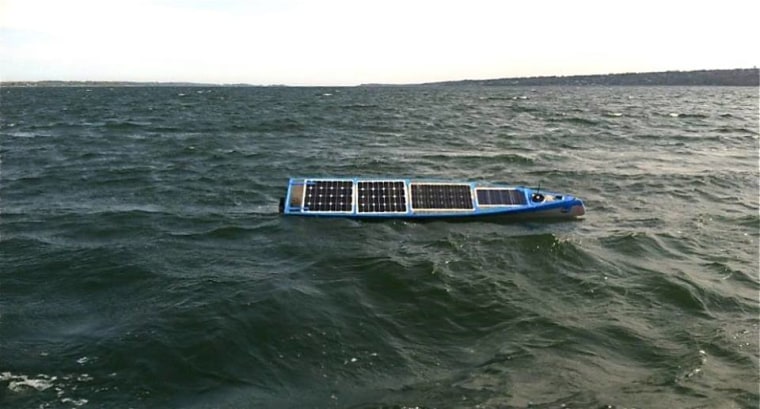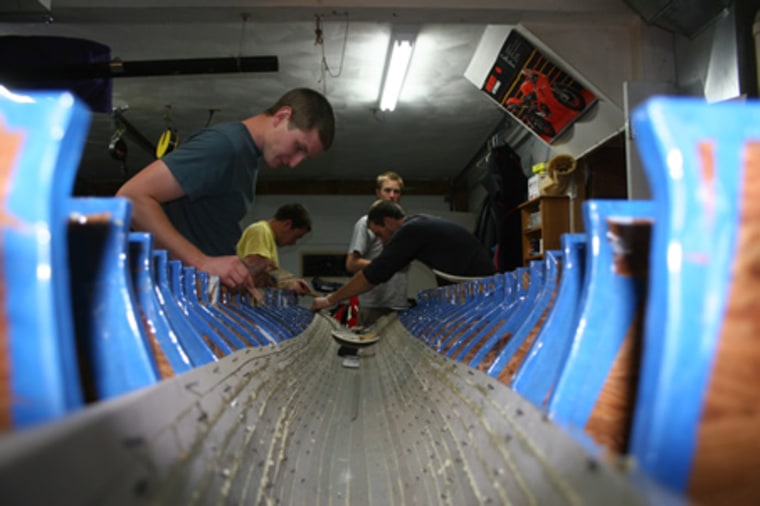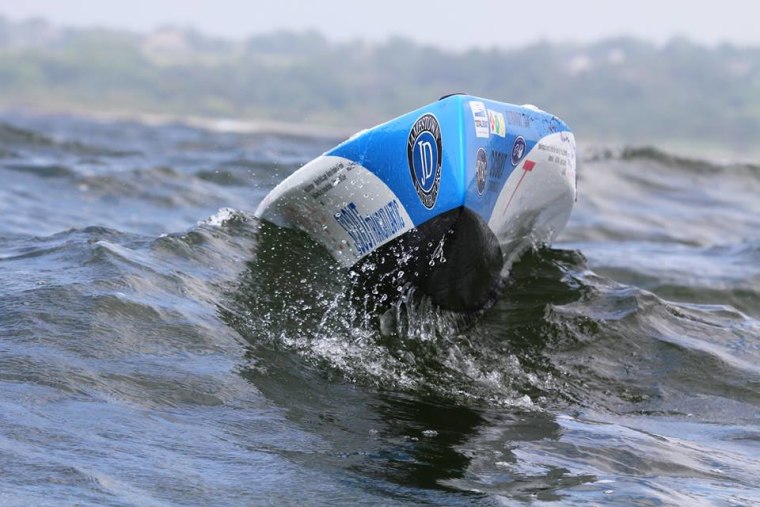Scout, a 13-foot long solar-powered autonomous water bot — built in a garage by seven college students — launched this fall from the shores of Rhode Island, headed east across the Atlantic toward Sanlucar de Barrameda, Spain.
In its first week, it broke a previous record for the longest distance covered by an autonomous transatlantic craft (60 miles). Fans of the little bot tracked its progress on its website and cheered it on. But 34 days after making its own way east, its main transmission fell silent, and 40 days later, its backup system failed too.
What has become of Scout the brave sea-faring robot? "Theories range from pirates to icebergs to someone stealing it," Dan Flanigan, one of Scout's builders who is studying maritime engineering at the University of Southampton in the U.K., told NBC News. Swallowed by a whale? Maybe. Hit by a ship? Anyone's guess. "Obviously sinking is a possibility," he said. "But we may never know."

On Thursday, the robot's trackers, a group of college students and recent grads, confirmed that they are letting the little skiff go. “On Wednesday, November 06, 2013, at 4:01:27 PM, we received the last transmission from Scout,” the group wrote on the bot's Facebook page on Thursday.
It's possible Scout will call back again, but Flanigan is not hopeful.
"It started out as a simple idea it took us three years to end up pulling off," Flanigan said. For every 100 or so miles the boat crossed, Flanigan and his crew, who are scattered across the U.S. and Europe, would gather on a Skype conference call to celebrate, it didn't matter what time it was.

The team "overbuilt" to protect the boat against storms and bad weather, and its programming instructs the boat to travel backwards once every few hours, to throw off debris that it might have collected on deck or on the rudder.
"We really weren't sure how far it would get," Flanigan said, "At the end of the day, sending something across the Atlantic is a roll of the dice."
The team launched the boat on Aug. 23 and everything went according to plan until Sept. 28. That weekend, the main tracking system, which sent back data every 20 minutes, went offline and never woke up. The boat followed a strangely “loopy” path for another 45 days before the backup tracker, glued onto the deck in a watertight chamber, failed too. “It has been exactly eight days since she vanished, and we think that this is as good of a time as any to put Scout to rest,” Scout’s minders wrote on the bot’s Facebook page.
The team that built Scout grew up together in Rhode Island, and put together the boat in crew member Max Kramers’ home garage.
The body of the boat is made of two sheets of carbon fiber, sandwiching a foam core, for lightness and strength. Solar panels on the deck soak in sunlight during the day, charging a battery that powers the boat’s movement during the night. In addition to GPS trackers, the boat is guided by two Arduino microcontrollers.
Donors on Kickstarter contributed $3,424 to the project. Jamestown Distributors, a boating equipment and building store in Rhode Island, contributed supplies. "They provided pretty much all of the raw materials for Scout," Flanigan said.
Though the group is prepared to let their bot go, they have a drop of hope in reserve, just in case Scout calls back. “You can all be assured that we'll all get tattoos of Scout's position if she ever does transmit to us again,” they write.
Nidhi Subbaraman writes about technology and science. You can follow her on Facebook, Twitter and Google+.
